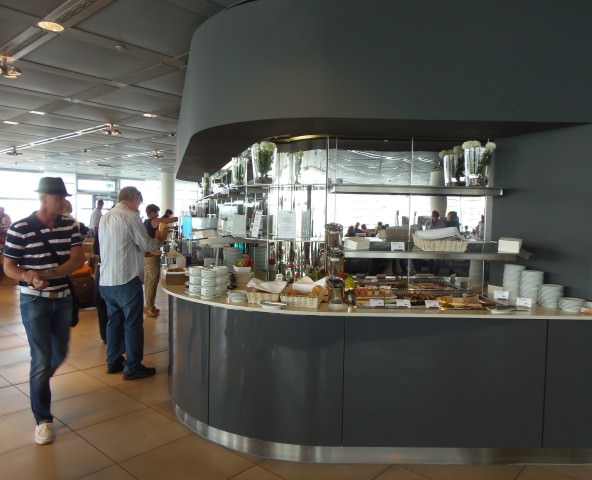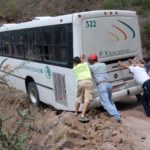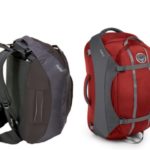Travel Tips: Part 2 – Traveling by Airplane

Travel Tips: Traveling by Airplane
Travel Tips: Part 2 – Traveling by Airplane
By Dan Dudek
Flying on commercial airlines is extremely safe. The most dangerous part of the trip is the drive to and from the airport. There are a few things you can do to help make your trip safer and more secure:
- Wear long pants (not ones with flammable synthetic fibers) and sturdy shoes (never high heels) when traveling by air; long pants prevent burns and scrapes to legs in some emergencies
- Book travel on larger aircraft when possible
- If possible, fly Business Class. This gives you access to the airlines’ Business Class lounges. These lounges not only provide a relaxing environment, clean restrooms, showers, complementary food & drinks, but are much safer locations to sit with your carry-ons. In some airports, you will also be given access to the priority security line (this helps you avoid standing in a long line, inevitable with some coughing passengers)
Lufthansa Business Class Lounge in Frankfurt, Germany
- Put an identification tag on the outside and inside each bag
- Only put your name and telephone number, not your address on the id tags (addresses on tags have been known to be provided to thieves so they can rob your house while you are traveling)
- Do not lock checked bags, the locks will be broken by security personnel if selected for screening; lock the bags after you pick them up at your destination (put all valuable items in your carry-on luggage and watch it closely)
- Place all medications (in their original containers) in your carry-on baggage
- If you are going to leave your car at the airport or some car parking area, consider storing in the car a set of battery jumper cables and park your car so the front (or section with the battery) is facing out to the road
- If your travel schedule is flexible, consider “volunteering” to be bumped to the next flight to your destination if your schedule flight is overbooked; you will usually be given a free domestic ticket for your inconvenience (Hint: if you would like to “volunteer”, be sure to go to the gate agent as soon as you arrive at the gate to get on the list, i.e. do not wait for the agent to make the announcement for “volunteers”)
- Do exercises in your seat or (better yet) walk around the plane once an hour to avoid developing blood clots; in your seat, you can press your legs down to the floor for a few seconds then release, do several repetitions; move your ankles in a circular motion, both clockwise and then counter-clockwise for about a minute (drinking tonic water for a few days before you fly, and during your flight may also help avoid leg cramps as tonic water contains some quinine; always check with your doctor to be sure drinking tonic water with quinine is safe for your particular medical situation)
- Drink plenty of non-alcoholic fluids, especially juice, to help offset the effects of jet lag
- Pack some energy bars in your carry-on (if your plane has to sit on the tarmac for more than an hour, you might want to have some nourishment)
- If your plane gets diverted due to a storm or some emergency, and as luck would have it, the airport to which you are being diverted is your final destination – privately talk to one of the airline flight attendants and request that you be allowed to exit the plane at the airport to which you are being deviated. You may be allowed to do so if you do not have any checked bags, and are deemed physically fit as you may have to use the rear crew-only steps. Ask the Flight Attendant to convey your request to the Captain. You may be asked to talk to the Captain. In any case, do not discuss your request with other passengers as others may want to deplane as well; and if so, most likely no one will be allowed to do so.
- Know the number of rows to the emergency exit
- Listen to all instructions of the air crew before takeoff and during an emergency
- Read the safety card and familiarize yourself with the plane’s emergency procedures
- Always wear your seat belt; unexpected turbulence can occur at any time
- If the emergency oxygen masks are deployed, always put yours on first before assisting others, including your children; you do not want to lose consciousness, if you do, you will not be able to help anyone
- Follow the instructions for putting on, inflating and using your life preserver
- If you have to evacuate, do NOT take anything with you; if smoke is in the cabin, exit quickly and try to stay low – seconds count!
Read More in Dan Dudek’s Travel Tips Safety Series:
Travel Tips: Travel Safe and Smart
Part 1 — Things to Consider Before You Take a Trip
Part 2 — Traveling by Airplane
Part 3 — Hotel Safety
Part 4 — Security & General Suggestions for International Travelers
Bio:
Dan Dudek travels extensively and has been to most U.S. states and Canadian provinces; and about 30 countries. He has a private pilot’s license (now inactive) and currently enjoys RV camping, sailing and many outdoor sports. As an Eagle Scout, he practices the scout motto to “Be Prepared” for all situations and confesses to being a person who likes “electronic toys”, especially those security related.






















2 Responses to Travel Tips: Part 2 – Traveling by Airplane